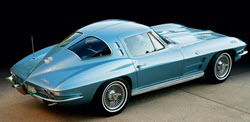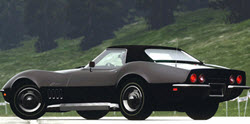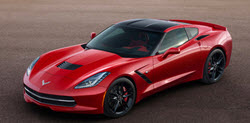A closer look at the Corvette C1 (1953–1962).
The Genesis of the Corvette C1 (1953-1962)
The Chevrolet Corvette C1, an emblematic symbol of American automotive ingenuity, marked the inception of a legacy when it made its debut in 1953. Created under the guidance of designer Harley Earl and brought to fruition by General Motors, this pioneering vehicle represented America’s bold response to the dominance of European sports cars of the era. Its unveiling at the GM Motorama event in New York City heralded a new chapter in car design and performance.
Design and Innovation
From its inception, the Corvette C1 was synonymous with innovation. The decision to craft its body using fiberglass represented a pivotal shift in automotive design philosophy. Fiberglass, an unconventional material choice at the time, offered distinct advantages over traditional steel. It was significantly lighter, providing the Corvette C1 with improved performance dynamics. Additionally, fiberglass allowed for more adventurous design freedom, enabling engineers to create sleek, aerodynamic shapes that were not easily achievable with metal. This choice not only marked a substantial technological advancement but also laid the foundation for future automotive design innovations.
Engine and Performance
Underneath its revolutionary exterior, the Corvette C1 housed a 235 cubic-inch (3.9 L) inline-six engine known as the “Blue Flame.” Although this engine’s output was a modest 150 horsepower, it set the stage for significant future developments. In 1955, the Corvette experienced a significant transformation with the introduction of the 265 cubic-inch (4.3 L) V8 engine. This transition marked a pivotal shift in the vehicle’s performance capabilities, transforming the Corvette from a visually appealing cruiser into a bonafide sports car. The potent V8 engine exemplified the Corvette’s evolving engineering prowess and laid the groundwork for future performance enhancements.
1956 Redesign and Enhancements
The year 1956 marked a turning point in the Corvette’s evolution. The model underwent a substantial redesign, reflecting both aesthetic and functional enhancements. Among the more noticeable changes was the introduction of a more assertive front grille, which gave the car a bolder, more aggressive appearance. Accompanying this visual upgrade were enhancements to the suspension system, improving the vehicle’s handling and ride comfort. The introduction of roll-up windows was a small but significant change, offering an improvement over the previous cumbersome side curtains, thus enhancing everyday usability for the driver and passengers.
Racing Heritage
One of the enduring hallmarks of the Corvette C1 is its storied racing heritage. Chevrolet’s vision for the Corvette extended beyond public roads to the racetrack, where it aspired to challenge the dominance of European manufacturers such as Ferrari and Porsche. Through diligent engineering and strategic enhancements, the Corvette proved competitive in motorsport venues. A key figure in this transformation was Zora Arkus-Duntov, affectionately known as the “Father of the Corvette.” Duntov’s visionary approach to performance engineering significantly influenced the Corvette’s development. Under his leadership, options such as fuel injection systems were introduced, pushing the power output even higher and securing its place as a formidable force on the competitive circuit.
Legacy and Cultural Impact
Though production of the Corvette C1 concluded in 1962, its legacy endures as a cornerstone of American automobile history. The C1’s distinctive design, paired with progressive technological innovations, helped establish the Corvette as a timeless classic. It set the standard for subsequent Corvette iterations, influencing both engineering advancements and cultural perceptions of American sports cars. Over time, the Corvette has become more than just an automobile; it is a cultural icon, embodying the spirit of American ingenuity and performance excellence. The C1’s impact is evident not only in the design and performance of later Corvette models but also in its infusion into the broader narrative of American automotive culture.
For those interested in delving deeper into the history and cultural influence of the Corvette C1, a wealth of resources is available for further exploration here.



